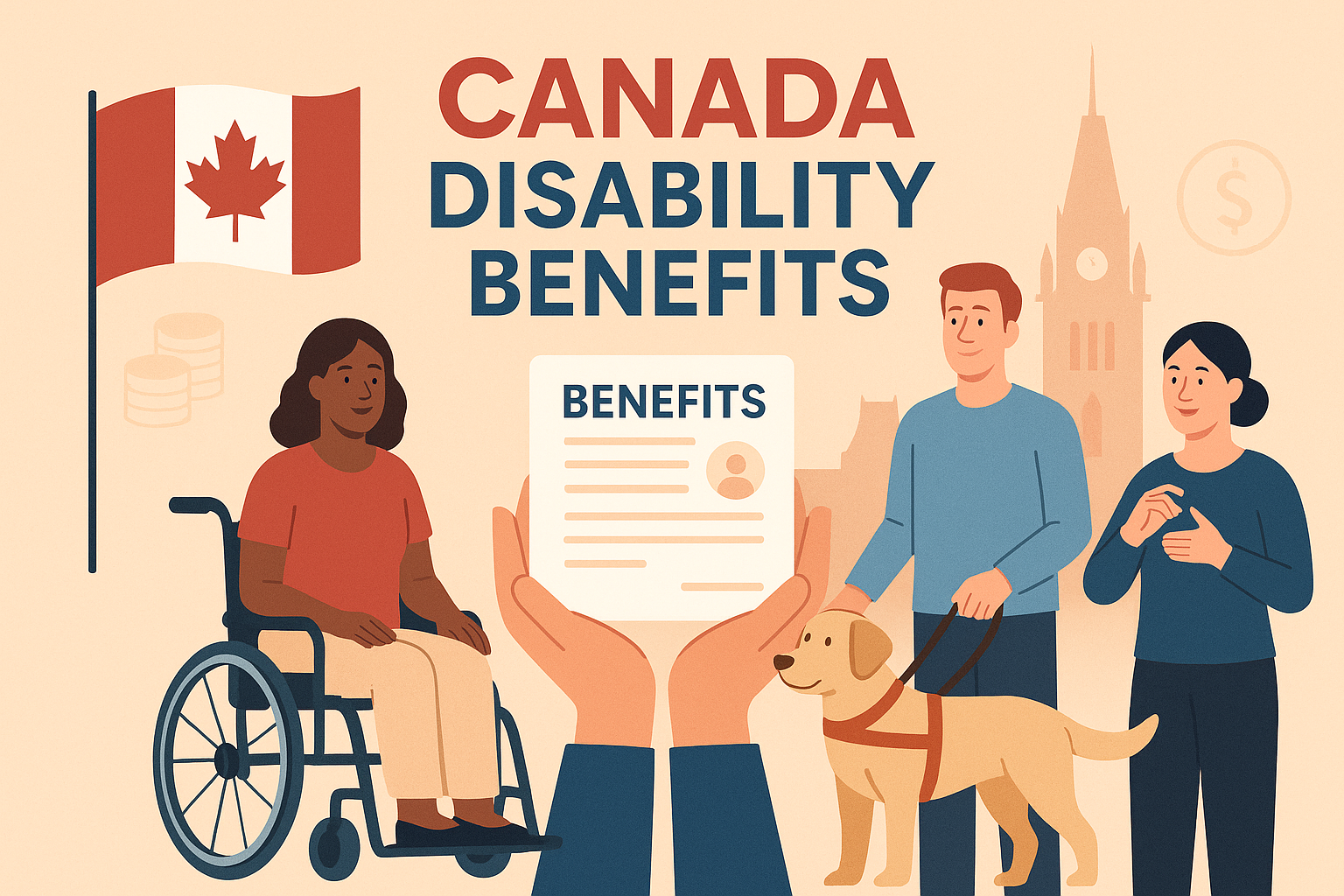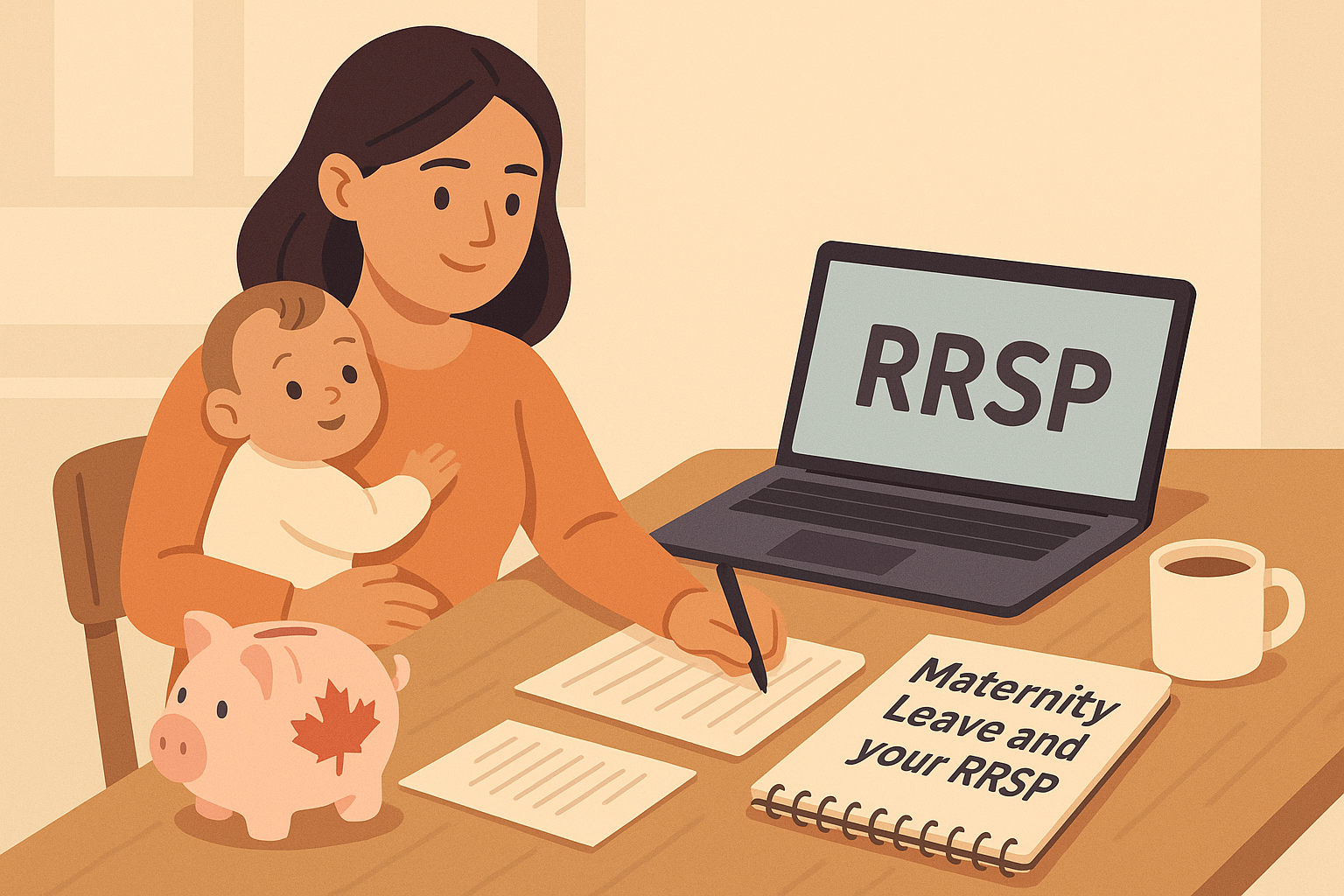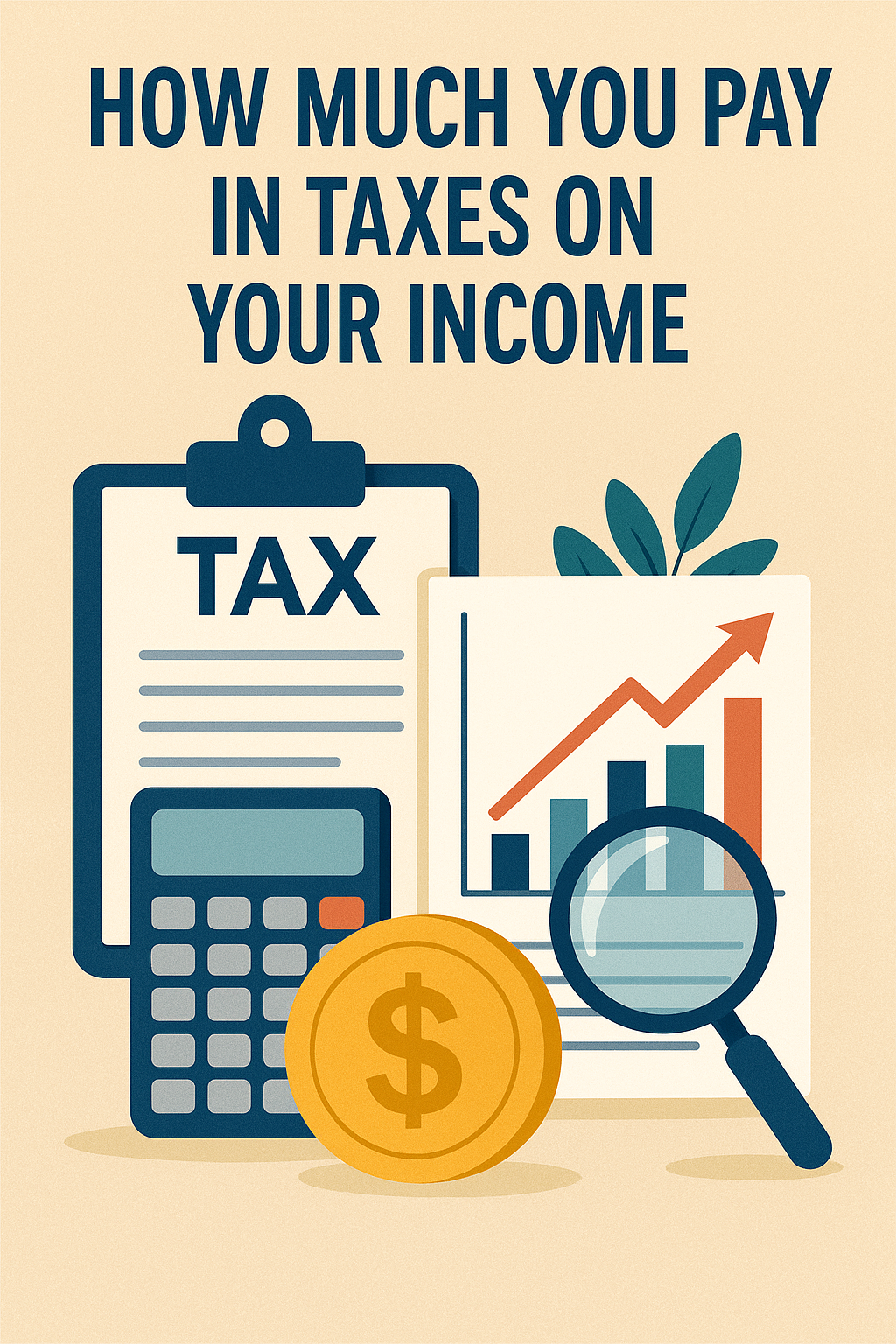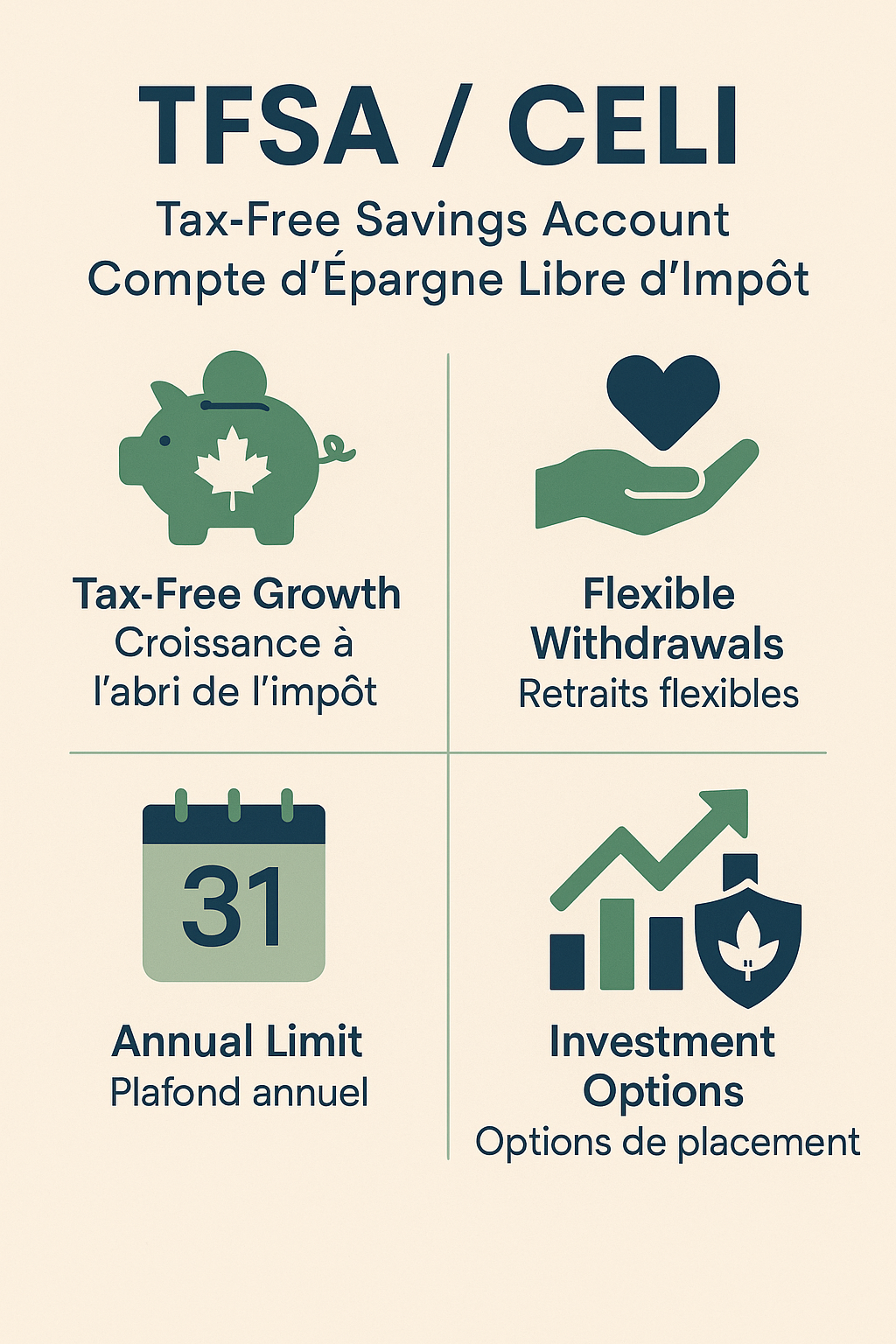I was recently dining with a friend of mine, Bob, in a restaurant in a small community in British Columbia. In the middle of our conversation, I asked whether he had any brothers or sisters. I had known Bob for a little more than two years, yet this was the first time I had inquired about his family. Bob took a deep breath and replied, “Mr. Faded, I have a sister, but she lives with a disability.” He went on to explain that he regularly helps his sister apply for the various disability programs to which she is entitled, but the process is challenging because the programs can sometimes be confusing. I was moved by his story, and I resolved that, if there were anything I could do to assist Canadians in circumstances similar to Bob’s sister, it would be to write the article you are about to read.
(Note: This article covers federal disability benefit programs only, and does not include any disability benefits that may exist at the provincial or territorial level.)
Disclaimer
While I try to ensure the accuracy of the information contained on this blog, I do not guarantee it. I’m not a licensed financial adviser nor a lawyer, so take this blog only as an educational resource and my personal thoughts and opinions. No liability is assumed for losses or disappointments due to the information provided. It is important that you always exercise your own judgement when making decisions that can impact your wallet, and your life!
Federal Disability Benefit Programs
Canada offers several federal programs to support people with disabilities and their families. These programs include tax credits, direct benefits, savings plans, and supplements to encourage workforce participation. In this article, we will explore four major federal programs: the Canada Disability Benefit, the Child Disability Benefit (CDB), the Disability Tax Credit (DTC), the Registered Disability Savings Plan (RDSP), and the Canada Workers Benefit (CWB) – Disability Supplement. For each program, we will describe its purpose, eligibility criteria, benefit amounts, and how to apply. Finally, we will explain how these programs interact with each other to provide a comprehensive safety net for Canadians with disabilities.
II. Disability Tax Credit
The Disability Tax Credit (DTC) is a non-refundable tax credit that helps reduce the income tax that people with disabilities (or their supporting family members) may have to pay. While the DTC itself doesn’t provide a direct cash benefit, it lowers your tax payable.
A. Eligibility
- Severe and Prolonged Impairment: To qualify for the DTC, an individual must have a severe and prolonged impairment in physical or mental functions. “Severe” generally means that the person is markedly restricted in their ability to perform basic activities of daily living (such as walking, feeding, dressing, hearing, speaking, seeing, or mental functions) all or nearly all of the time, even with appropriate therapy and devices. “Prolonged” means the impairment has lasted, or is expected to last, for at least 12 consecutive months.
- Certified by a Medical Practitioner: A doctor or other qualified health practitioner (depending on the impairment, e.g., optometrist for vision, audiologist for hearing, psychologist for mental functions, etc.) must certify the impairment on the official form (Form T2201). The form details the areas in which the person is markedly restricted and must be signed by the practitioner.
- No Age Restriction: The DTC can be claimed by or on behalf of individuals of any age (children or adults) as long as the criteria are met. For minors, a parent or guardian typically claims the credit (or a portion of it) on their tax return if the child has no taxable income.
- Transferable Credit: If the person with the disability does not have enough income to utilize the tax credit fully, they can transfer the unused portion to a supporting family member such as a parent, spouse, or caregiver. This ensures the value of the credit is not lost if, for example, a disabled child has no income – the parent can use it to reduce their taxes.
B. Benefit Amount
- Disability Amount (Tax Credit Value): The DTC provides a federal disability amount that one can claim on the income tax return. The amount is adjusted periodically for inflation. The disability amount for the 2024 tax year was $9,872.
- Supplement for Children: If the disabled person is under 18 years old, there is an additional supplement to the disability amount that can be claimed. This supplement is meant to recognize the extra costs faced by families of children with disabilities. However, this supplement may be reduced if someone claims certain child care or attendant care expenses for that child. The combination of the base disability amount plus the child supplement can significantly increase the tax credit available to a parent of a disabled child. The supplement for children for the 2024 tax year is $5,758.
- Retroactive Claims: A notable feature of the DTC is that once approved, you might be able to retroactively claim the credit for past years (up to 10 years back) if you were eligible but had not claimed it. This can result in substantial tax refunds for prior years if the disability existed but was not previously certified.
C. How to Apply
Applying for the Disability Tax Credit involves the following steps:
- Complete Form T2201 (DTC Certificate): Obtain the form called T2201 – Disability Tax Credit Certificate. Part of the form is to be completed by the applicant (or their guardian) with basic personal information. The crucial part is completed by a qualified medical practitioner who must detail the impairment. The form has different sections for different types of disabilities (vision, speaking, hearing, walking, mental functions, life-sustaining therapy, etc.). The practitioner should fill out the sections relevant to the individual’s condition and certify that the severity and duration meet the DTC criteria.
- Submit the Form to the CRA: Once the medical professional has filled out their portion, you (or the professional) send the completed Form T2201 to the Canada Revenue Agency. This can be done by mail, and in some cases there is an option for electronic submission if the medical professional is set up to file it online. Ensure that all required information is provided to avoid delays.
- CRA Assessment: The CRA will review the application. They may contact you or the medical professional for additional information if needed. After review, the CRA will send a notice of determination to inform you whether the application is approved or denied. This notice will also indicate the years for which you are eligible.
- Claim on Tax Return: If approved, you (or your supporting family member) can start claiming the Disability Tax Credit on your next tax return (line 31600 for yourself or line 31800 for a dependent). You can also request adjustments to past tax returns (using Form T1-ADJ or through CRA’s My Account) for any retroactive years you were eligible, in order to claim refunds for those years.
- Renewal: In many cases, once approved, the DTC status will be valid indefinitely or for a specified number of years (for example, some conditions are given temporary approval and need re-certification after a few years). The CRA notice will tell you if a reapplication is required after a certain date. Always keep track of that, because if the DTC expires, any linked benefits could be affected.
I. Child Disability Benefit
The Child Disability Benefit (CDB) is a tax-free monthly payment provided to families who care for a child under age 18 with a severe and prolonged disability. It is a supplemental benefit that is added on top of the Canada Child Benefit (CCB) for eligible families. In other words, if you are already eligible for the CCB and you have a child who qualifies for the Disability Tax Credit (DTC), you can receive the CDB as extra support to help with the costs of caring for a disabled child.
A. Eligibility
- Eligible Child: To receive the CDB, the child must be under 18 years of age and must be eligible for the Disability Tax Credit (DTC) (i.e. the child has a severe and prolonged physical or mental impairment certified by the Canada Revenue Agency). In practice, this means a medical practitioner has certified the child’s disability and the CRA has approved the DTC for that child.
- Eligible Caregiver: The caregiver (usually a parent) must be eligible for the Canada Child Benefit. This generally requires the caregiver to be a Canadian resident for tax purposes who is primarily responsible for the child’s care and has filed annual income tax returns. The benefit is income-tested, so the family’s net income will affect the amount received (higher-income families receive a reduced amount).
B. Benefit Amount
The CDB is a fixed annual amount (paid monthly) that can be up to several thousand dollars per year per eligible child. For the period of July 2024 to June 2025, the maximum monthly amount is approximately $275.83 per child (this amount is indexed to inflation and may increase slightly each year). The CDB is a tax-free benefit, meaning you do not pay income tax on it.
C. How to Apply
To receive the CDB, you need to do the following:
- Apply for the Disability Tax Credit for the Child: Ensure that a Disability Tax Credit Certificate (Form T2201) is completed and approved for the child. This involves having a qualified medical practitioner fill out the form to certify the child’s impairment, and submitting it to the Canada Revenue Agency (CRA). Once the CRA approves your child’s DTC, they will be marked as eligible for the disability amount.
- Apply for the Canada Child Benefit: If you haven’t already, you must apply for the Canada Child Benefit (usually done when a child is born or when you become eligible as a caregiver). This establishes the base benefit.
- Automatic Payment: After the above steps, the CRA will automatically calculate and include the Child Disability Benefit in your monthly Canada Child Benefit payments. There is no need to apply separately for CDB – it will start once the child’s DTC is approved and you are confirmed to be eligible for CCB. Be sure to file your income tax return each year, as the CCB (and CDB) entitlement is recalculated annually based on family income.
III. Canada Disability Benefit
The Canada Disability Benefit is a new federal financial support program designed to address poverty and enhance the financial security of working-age people with disabilities. Stemming from the Canada Disability Benefit Act, which came into effect on June 22, 2024, this benefit is a cornerstone of Canada’s Disability Inclusion Action Plan. The first payments for this new benefit are set to be issued in July 2025.
A. Eligibility
To be eligible for the Canada Disability Benefit, several criteria must be met. Applicants must be between the ages of 18 and 64, be a resident of Canada, and have an approved Disability Tax Credit (DTC) certificate. Furthermore, you and your spouse or common-law partner, if applicable, must have filed your income tax returns for the previous year.
B. Benefit Amount
The maximum amount provided by the Canada Disability Benefit is $2,400 per year, which translates to a monthly payment of $200. The specific amount an individual receives is calculated based on their adjusted family net income from the previous tax year.
C. How to Apply
Applications for the Canada Disability Benefit opened on June 20, 2025. To complete the application, you will need your Social Insurance Number (SIN) and direct deposit information. It’s important to note that you must be approved for the Disability Tax Credit (DTC) before you can receive the Canada Disability Benefit, so it is recommended to start that process as early as possible.
III. Canada Workers Benefit – Disability Supplement
The Canada Workers Benefit (CWB) is a refundable tax credit that supports low-income individuals and families who are working. Within the CWB, there is a special Disability Supplement for those workers who have disabilities. This supplement increases the amount of support they can receive, acknowledging that working while living with a disability can incur extra costs or challenges. The CWB replaced the older Working Income Tax Benefit (WITB) in 2019 and expanded its benefits. The disability component existed under WITB and continues under CWB.
A. Eligibility
- Eligibility for Base CWB: First, to be eligible for the CWB (with or without disability supplement), an individual must meet the base criteria: be a Canadian resident for tax purposes, be between 18 and 64 years old (unless you have a spouse or child and thus qualify younger), earn income from employment or business but have a low/modest income overall, and not be a full-time student or incarcerated.
- Disability Supplement Criteria: To get the Disability Supplement portion of the CWB, the individual (or their spouse, in the case of a couple) must be eligible for the Disability Tax Credit in that tax year. In practice, this means you have a valid DTC certificate approved by CRA. Only those who are DTC-eligible can claim the disability supplement. Each spouse who is DTC-eligible can claim a disability supplement if both are low-income workers.
- Income Phase-Out: The disability supplement, like the base CWB, is income-tested. It starts reducing after your income passes a certain threshold. The phase-out for the disability amount may have its own threshold or simply add on to the base CWB phase-out calculation. Essentially, at very low incomes you get full CWB plus full disability supplement; at higher incomes (still modest incomes), both the base and the supplement gradually reduce to zero.
B. Benefit Amount
- Base CWB Amount: the base CWB for a single individual (no dependents) is $1,590 for 2024. This amount is gradually reduced if your adjusted net income is more than $26,149. No basic amount is paid if your adjusted net income is more than $36,749. For families (couples or those with children), the maximum base CWB is $2,739 for 2024. This amount is gradually reduced if your adjusted family net income is more than $29,833. No basic amount is paid if your adjusted family net income is more than $48,093.
- Disability Supplement Amount: The CWB includes an additional maximum amount of $821 for single individuals. This amount is gradually reduced if your adjusted net income is more than $36,748. No disability supplement is paid if your adjusted net income is more than $42,222. For families, the supplement amount is $821 for 2024. This amount is gradually reduced if your adjusted family net income is more than $48,091. No disability supplement is paid if one spouse is eligible for the disability tax credit and your adjusted family net income is more than $53,565, or if both spouses are eligible for the disability tax credit and your adjusted family net income is more than $59,038.
C. How to Apply
- File Your Tax Return: There is no separate application form for the Canada Workers Benefit. Eligibility and amounts are determined through your annual income tax return. Ensure that you file your tax return every year, even if you have low income or no tax payable, because that is the only way to receive the CWB and disability supplement.
- Claim the Disability Supplement: On your tax return, there is a section to indicate eligibility for the disability supplement. Usually, if the CRA already has you marked as DTC-eligible for the year (meaning you have a valid DTC on file), the form will allow the disability supplement. You may need to tick a box confirming that you are eligible for the DTC and wish to claim the supplement for yourself (and similarly, if you have a spouse with a disability, there’s a box to claim for them). If you’re filing electronically, the software will typically prompt you with the CWB questions.
- Maintain DTC: Since the disability amount of the CWB hinges on DTC, ensure that your Disability Tax Credit approval is up-to-date for the tax year. If your DTC was approved in prior years for a period that includes the current tax year, you’re set. If it expired, you would need to reapply and be approved to claim the supplement.
IV. Registered Disability Savings Plan
The Registered Disability Savings Plan (RDSP) is a long-term savings plan designed to help Canadians with disabilities (and their families) save for the future. It is registered with the government, which means it comes with special tax advantages and government contributions as incentives. The RDSP is somewhat analogous to the Registered Education Savings Plan (RESP) but for disability savings – money in the account grows tax-deferred, and the government will contribute through matching grants and income-tested bonds to boost the savings.
A. Eligibility
- DTC Eligibility: To open an RDSP, the beneficiary (the person with a disability who will benefit from the fund) must be eligible for the Disability Tax Credit. This is a fundamental requirement – if the DTC status is lost, contributions and bonds/grants into the RDSP may be halted or the plan may even have to be closed in the long run. So maintaining DTC eligibility is important for RDSP holders.
- Age Limit: The RDSP can be opened for an individual who is under the age of 60 (a plan can be opened for an individual until the end of the year in which they turn 59).The age limit does not apply when a beneficiary’s RDSP is opened as a result of a transfer from the beneficiary’s former RDSP.
- A beneficiary can only have one RDSP at any given time, although this RDSP can have several plan holders throughout its existence and it can have more than one plan holder at any given time.
- Residency and SIN: The beneficiary must be a resident of Canada when the plan is opened and when contributions are made. A valid Social Insurance Number (SIN) is required for the beneficiary (and also for the plan holder if the plan holder is different).
B. Benefit Amounts and Government Contributions
The RDSP itself is not a cash benefit program but rather a savings vehicle. The “amount” of benefit comes from government contributions and tax-deferred investment growth. Key components include:
- Lifetime Contribution Limit: You, your family, and friends can contribute up to a lifetime total of $200,000 into an RDSP for a beneficiary. Contributions are not tax-deductible (unlike RRSP contributions), but investments grow tax-free while in the plan.
- Canada Disability Savings Grant (CDSG): This is a matching grant from the federal government to encourage contributions. The grant will match private contributions at rates of 100%, 200%, or 300% depending on the beneficiary’s family income and the amount contributed. For low- to middle-income beneficiaries, the match is very generous. In 2025, if a beneficiary’s adjusted family net income is $114,750 or less, on the first $500 contributed each year, the government will contribute $3 for every $1 contributed (300% match), up to $1,500 a year. On the next portion (e.g. the next $1,000 contributed), the match is 200% ($2 per $1), up to $2,000 a year. If the beneficiary’s adjusted family net income is more than $114,750, on the first $1,000 contribution the government will match $1 for every 1 dollar contributed, up to $1,000 a year.
- The maximum CDSG the government will give is $3,500 per year, up to a lifetime maximum of $70,000 in grants per beneficiary.
- Canada Disability Savings Bond (CDSB): This is a bond (direct contribution) from the government for low-income Canadians with disabilities, even if they cannot contribute themselves. If the beneficiary’s family income is below $37,487 (or if the holder is a public institution), the bond is $1,000. If the beneficiary’s family income is between $37,487 and $57,375, part of the $1,000 is based on the formula in the Canada Disability Savings Act. No bond is paid out if the income is more than $57,375.
- Tax-Deferred Growth: Any investment income or growth (interest, dividends, capital gains) earned inside the RDSP is not taxed as it accumulates. When money is withdrawn from the RDSP, part of the withdrawal will be taxable (specifically the portions that came from grants, bonds, and investment earnings are taxable) and part will not be taxable (the original contributions were after-tax, so those come out tax-free). Withdrawals are called Disability Assistance Payments and can be taken periodically, typically after a 10-year waiting period from the last grant/bond (to avoid repayments).
- Withdrawals and Holding Period: RDSPs are intended for long-term savings. If you withdraw funds too early, you may have to repay some of the government grants and bonds (there is a rule called the “ten-year rule” – any grants or bonds paid in the last 10 years prior to a withdrawal might be clawed back proportionally if withdrawals occur). To get the full benefit, it’s best to plan to keep funds in the RDSP until at least 10 years after the last grant/bond or until the beneficiary is around retirement age. Withdrawals taken after the beneficiary turns 60 are treated as retirement income for the disabled person, and at that point all contributions from the government have vested.
- Effect on Other Benefits: Money in an RDSP and withdrawals from an RDSP generally do not affect eligibility for other federal income-tested programs (for example, it does not reduce your Canada Child Benefit, GST credit, Old Age Security, etc.). Most provinces and territories also exempt RDSP assets and withdrawals from affecting provincial disability assistance benefits (so having an RDSP should not disqualify someone from provincial disability social assistance).
C. How to Apply (Open an RDSP)
- Obtain DTC Approval: As a prerequisite, the beneficiary must have been approved for the Disability Tax Credit. Make sure you have the DTC in place before trying to open an RDSP, since financial institutions will require proof of DTC eligibility.
- Choose a Financial Institution: Not all banks or institutions offer RDSPs, but many major banks, credit unions, and financial service providers do. The institution that offers RDSPs is called the “issuer” of the plan. Do some research or inquire with your bank to see if they support RDSP accounts. Some popular providers include BMO, ScotiaBank, RBC, TD, CIBC, etc., as well as some credit unions and mutual fund companies.
Donate To Support This Blog
If you find this content helpful, please consider supporting Finance Faded with a small donation. As a solo author, I cover all costs—from hosting and domain fees to essential plugins and maintenance—out of pocket. Your contribution helps keep the site running and allows me to continue producing independent, high-quality financial insights. You can donate any amount by clicking on the “Buy Me a Coffee” button below. Thank you for your support!







